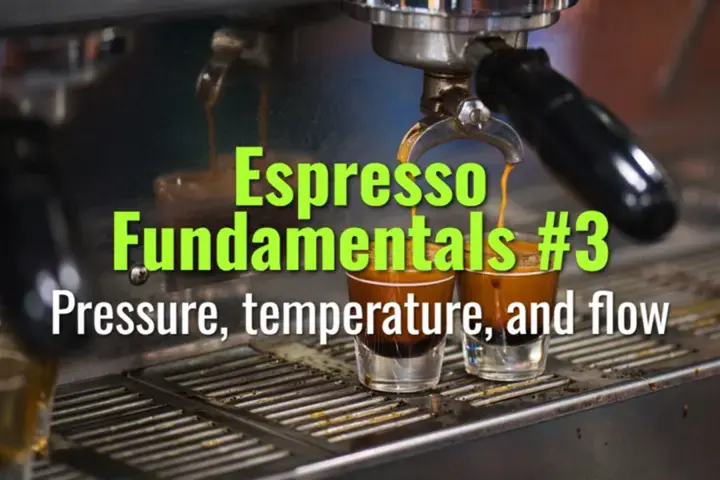Pressure, temperature, and flow
How pressure, temperature, and flow interact to control espresso extraction and flavor balance.
- Coffee Basics Nerds
- 1 min read
Article 3 of 12 in Espresso Fundamentals/

Pressure
- Standard: ~9 bars is typical for most machines.
- Impact:
- Too low (<7 bar) → weak, under-extracted shot, thin crema.
- Too high (>10 bar) → choked flow, over-extraction, bitterness.
- Pre-Infusion:
- Gentle low-pressure pre-wetting of the puck (2–4 bar) improves even extraction and reduces channeling.
Temperature
- Range: 90–96 °C (195–205 °F).
- Impact:
- Too cool (<90 °C) → under-extracted, sour, sharp.
- Too hot (>96 °C) → over-extracted, bitter, harsh.
- Stability: Fluctuations during a shot create inconsistency; modern machines use PID controls for stability.
Flow Rate
- Definition: Speed at which water passes through the puck.
- Normal: 25–30 sec for a 1:2 ratio shot.
- Impact:
- Too fast → under-extraction, thin body, sourness.
- Too slow → over-extraction, bitterness, astringency.
- Influenced by: Grind size, tamping, dose, and puck integrity.
Interactions
- Pressure drives water through the puck.
- Temperature controls solubility of compounds.
- Flow rate reflects resistance in the puck.
- Together, they define extraction yield and sensory profile.
Summary
Balanced espresso requires ~9 bar pressure, 90–96 °C stable temperature, and a flow rate yielding 25–30 sec extractions. Fine-tuning these variables ensures harmony between sweetness, acidity, and body while avoiding sour or bitter extremes.